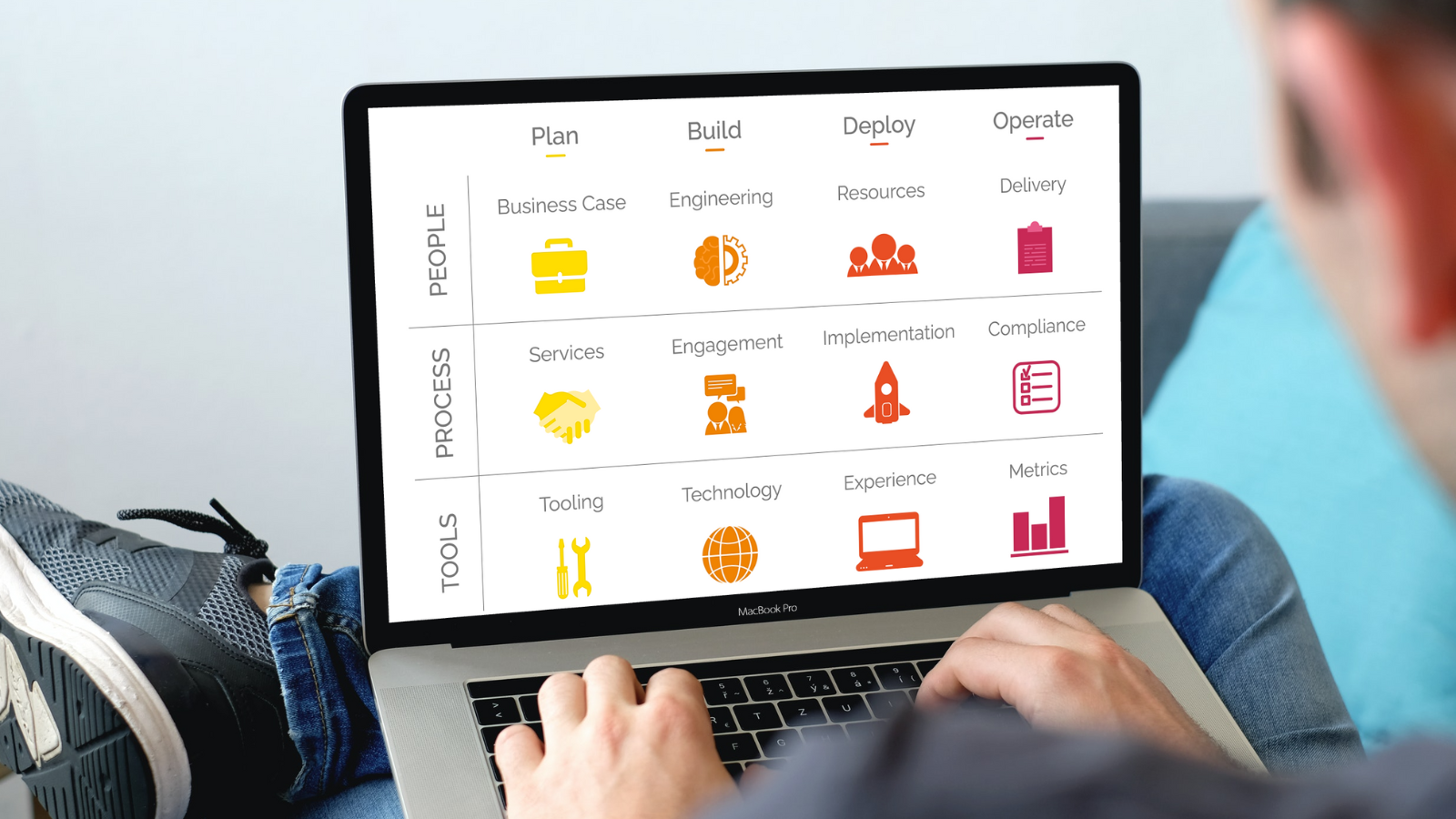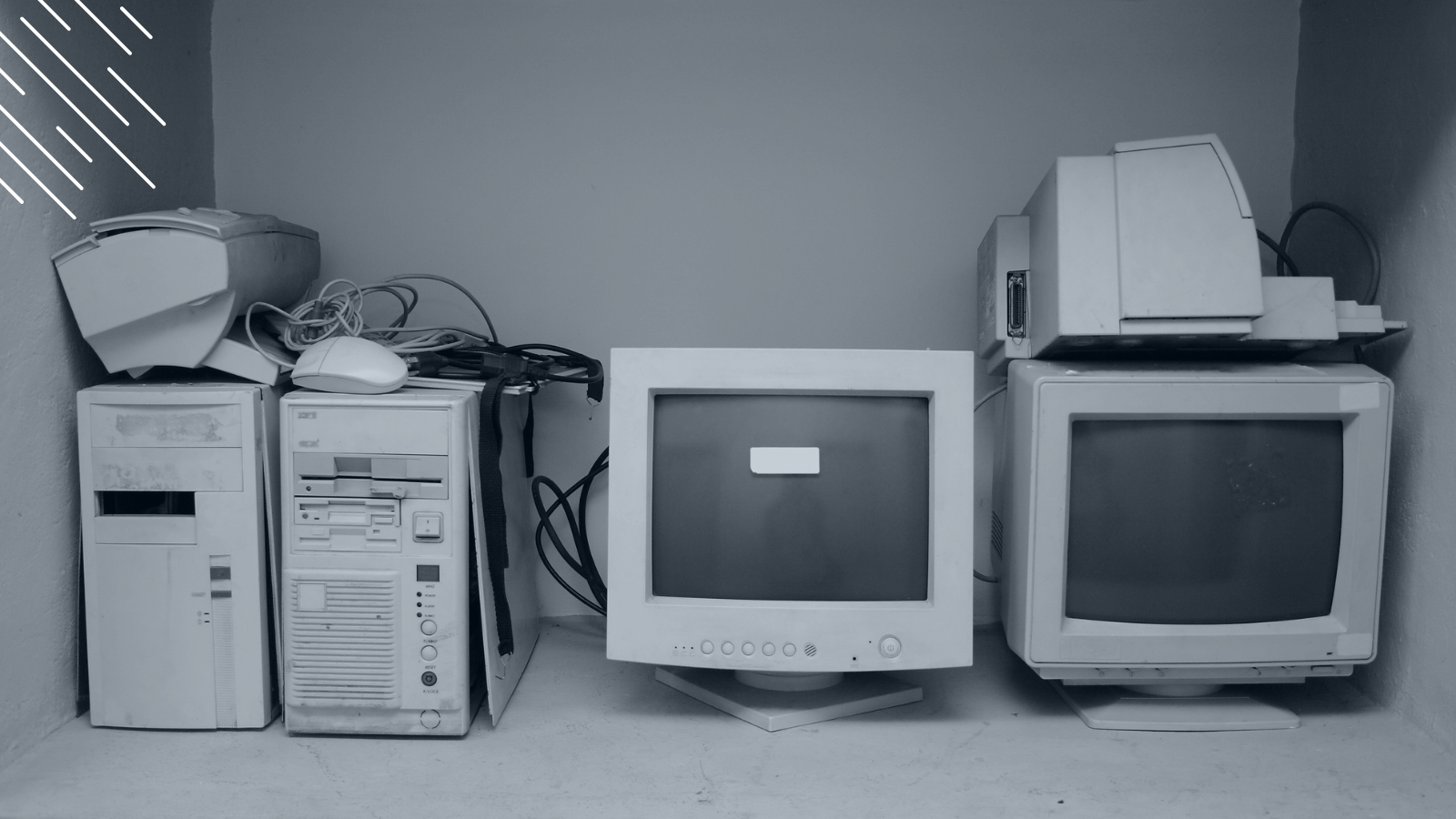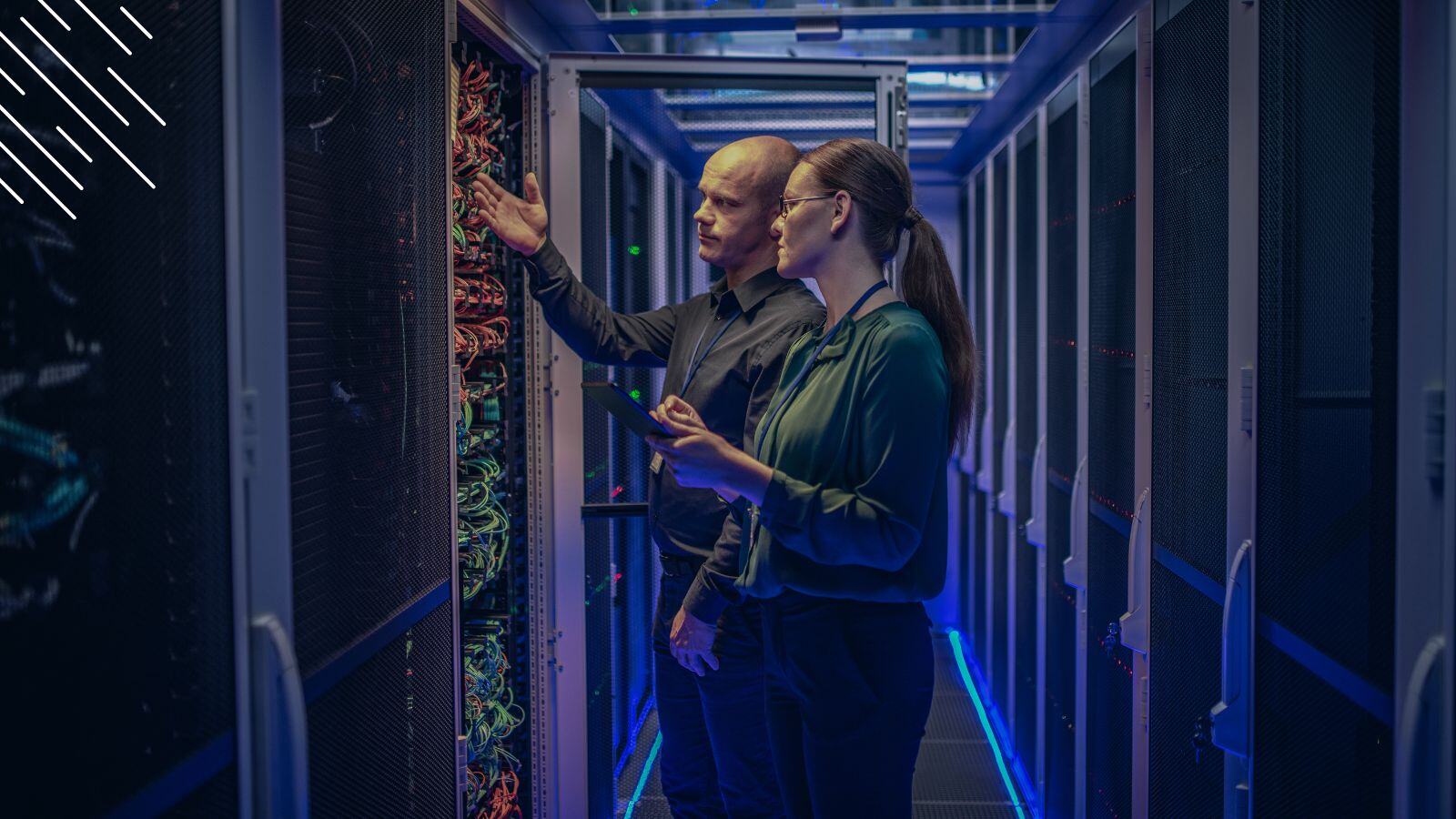Maximizing the ROI of enterprise device lifecycle management
December 21st, 2022
6 min read
By Barry Angell

The return on investment of Device Lifecycle Management (DLM) initiatives is a key consideration for Digital Workplace leaders and enterprise IT managers looking to optimize their hardware refresh processes, smooth out IT budget spikes, and streamline the onslaught of tasks usually associated with these types of programs. With increased pressure from stakeholders and customers alike, organizations must consider the cost and performance implications of their device lifecycle decisions.
In this blog post, we will explore what exactly Device Lifecycle Management entails and how Total Cost of Ownership (TCO) can be calculated for end user devices; we will examine strategies for determining Return on Investment (ROI) and explain ways to balance cost with security when managing these projects. Read ahead to learn more about optimizing your organization's approach toward device lifecycle management ROI!
Topics covered in this article:
- What Is Device Lifecycle Management?
- Calculating the Total Cost of Ownership (TCO) for enterprise end user devices
- Determining Return on Investment (ROI) for Hardware Refresh Projects
- Strategies for Optimizing the Device Lifecycle Management Processes in Enterprises
What is Device Lifecycle Management?
Device Lifecycle Management is an important consideration for enterprises to maximize their investments and ensure the security of their digital assets. Let's first define it and then take a quick look at the benefits and challenges you can expect.
Definition of Device Lifecycle Management
Device Lifecycle Management (DLM) is an IT service that covers all aspects of the device’s lifecycle, from procurement or birth to retirement. This includes planning for future needs; budgeting; purchasing; deploying; monitoring usage and performance; providing maintenance and repairs when needed; upgrading or replacing as necessary; disposing of outdated equipment in an environmentally friendly manner; and more. The goal of DLM is to ensure that enterprise end user devices are managed efficiently throughout their entire lifespan to maximize cost savings while still meeting performance requirements.
Benefits of Device Lifecycle Management
The primary benefit of DLM is cost savings through improved efficiency in managing enterprise end user devices. By proactively managing these assets over time, rather than waiting until they fail or become obsolete before replacing them, organizations can reduce their total cost of ownership (TCO). Additionally, with better control over device inventory levels comes increased visibility into usage patterns which can help inform decisions about when it makes sense to replace certain types or models based on actual need rather than just age alone. Finally, having a comprehensive view of the current state of each asset allows IT teams to quickly identify potential problems before they become significant issues resulting in costly downtime or data loss due to lackadaisical management practices.
Challenges of Device Lifecycle Management
Implementing a successful DLM program within an organization has many benefits. However, some challenges must be addressed. These include complexity around tracking multiple vendors/suppliers for different components used within each device and compatibility issues between different versions/models across various platforms/operating systems. Ensuring adequate security measures are taken during every stage, from initial purchase through final disposal, requires significant effort both upfront during setup and ongoing vigilance against threats posed by malicious actors. Additionally, identifying appropriate sources for acquiring new equipment at competitive prices without sacrificing quality remains a challenge even today, given how rapidly technology evolves.
💡Key Takeaway: Device Lifecycle Management (DLM) is a critical IT service that helps enterprises optimize their hardware refresh processes and reduce costs while maintaining performance and security standards. Benefits of DLM include cost savings, improved efficiency, better control over device inventory levels, increased visibility into usage patterns, and quick identification of potential problems. Challenges include complexity around tracking multiple vendors/suppliers; compatibility issues; ensuring adequate security measures; and identifying appropriate sources for acquiring new equipment at competitive prices without sacrificing quality.

Calculating the Total Cost of Ownership (TCO) for enterprise end user Devices
When it comes to enterprise end user devices, calculating the total cost of ownership (TCO) is essential for understanding the full financial impact of a machine. TCO considers not only the purchase price but also ongoing maintenance costs; repair costs; upgrade costs; energy consumption costs; disposal/recycling fees; training expenses associated with new technology or software updates; any other related expenses.
Let's say you are considering purchasing 100 laptops with similar specs at $1,000 each upfront plus another $200 per year in maintenance fees per laptop over their expected 5-year lifespan. This would equate to a total cost of ownership (TCO) of $7000 ($1000 x 100 + 200 x 5 years).
On the other hand, if you were looking at higher-end models with longer lifespans, then your overall TCO could be much higher depending on how long they last before needing replacement or upgrades. In this case, you may want to factor in additional variables like depreciation rates or estimated residual value when making your calculations.
Calculating the TCO of enterprise end user devices is an important part of any device lifecycle management program and having the right tools and resources to do so can help ensure a successful ROI. In the next section, we will explore how to use these tools and resources to calculate TCO for different devices.
💡Key Takeaway: When calculating the total cost of ownership (TCO) for enterprise end user devices, it is vital to consider all related expenses such as purchase price, maintenance costs, repair costs, upgrade costs, energy consumption costs, and disposal/recycling fees. It is also important to consider variables like depreciation rates or estimated residual value when calculating to get an accurate picture of the device’s actual cost over its lifetime.

Determining Return on Investment (ROI) for device refresh programs
In conclusion, several factors need to be taken into consideration when evaluating return on investment (ROI) for hardware refresh programs. While many factors impact your ROI, cost savings opportunities, improved performance resulting from upgraded technologies, and enhanced security measures, are the most important ones.
-
Cost savings. One of the principal factors to consider when determining ROI for hardware refresh projects is cost savings. Enterprises need to weigh the costs associated with purchasing new devices against those related to maintaining existing ones. Tools like Total Cost of Ownership (TCO) calculators can help enterprises determine whether a hardware refresh program will result in significant cost savings over time.
-
Improved performance & increased productivity. Another factor that needs to be considered is improved performance. Newer devices are often more powerful than their predecessors, which can lead to a better user experience and increased productivity. Enterprises should also consider potential gains from faster application loading times, reduced system downtime due to fewer crashes or errors, and other improvements newer technologies bring with them.
-
More advanced security. Equally, enterprises need to also consider any enhanced security measures. Upgrading outdated systems can reduce the risk of data breaches by introducing more robust encryption protocols or patching known vulnerabilities in older software versions that malicious actors in the past may have exploited. Additionally, new devices may offer additional features such as biometric authentication, which further strengthen an organization’s overall cybersecurity posture while providing users with greater convenience at the same time.
By carefully weighing these elements against each other during decision-making processes around Evergreen IT initiatives such as Windows 11 OS upgrades, enterprises can ensure they make informed decisions about their investments while achieving optimal results from their DLM programs.
💡Key Takeaway: When evaluating the ROI for hardware refresh programs, enterprises should consider several factors, chief among them cost savings, improved performance, and enhanced security.

Strategies for optimizing the Device Lifecycle Management processes in enterprises
Automating your Device Lifecycle Management processes can result in a drastic reduction in costs while improving efficiency and productivity. Enterprises could use tools like Juriba's Digital Platform Conductor (DPC) to set governing rules around their device lifecycle management and then automate the processes accordingly. A rule could be that every device must be replaced within the last three months of the warranty period, or an email must be sent to the machine's owner three months before the end of the warranty asking them if they would like to use the device for another 12 months. You can then use intelligent automation and smart workflows to do the heavy lifting for you.
Additionally, it helps to implement best practices such as regular maintenance checks of hardware components or using predictive analytics tools for forecasting future needs can help streamline the DLM process by reducing downtime due to unexpected issues or delays caused by a lack of planning. Additionally, having clear policies in place regarding when it is appropriate to replace aging devices versus repairing them will also help optimize the DLM process by ensuring that resources are being used efficiently.
Furthermore, to optimize DLM processes within an enterprise environment, measures such as encryption protocols on all devices connected to the network, regularly updating anti-virus software, restricting access based on roles, utilizing two-factor authentication, conducting regular audits of user activity logs, training staff members on cyber security best practices, monitoring networks for suspicious activity and backing up data regularly should be taken into consideration.
💡Key Takeaway: Automating the device lifecycle management process can save time and money while improving efficiency and productivity. Utilize intelligent automation and smart workflows wherever possible to minimize the amount of work involved.
Conclusion
In conclusion, device lifecycle management is an essential process for enterprises to consider when managing their end user devices. By understanding the total cost of ownership (TCO) and return on investment (ROI) associated with hardware refresh projects, enterprises can make informed decisions about optimizing their device lifecycle management processes. A balance must be struck between cost savings, performance gains, and security requirements to ensure that the enterprise’s device lifecycle management ROI remains high. With careful planning and execution of these strategies, organizations can maximize the value they receive from their investments in hardware refresh programs whilst minimizing any disruption or risk to users.
Are you looking for a comprehensive solution to manage your end user digital workplace change projects? Juriba is the answer! Our central command and control center provides enterprises with an all-in-one device lifecycle management platform that helps ensure ROI on your investments – without any hassle or complexity. Get started today and see real results fast!
Barry is a co-founder of Juriba, where he works as CEO to drive the company strategy. He is an experienced End User Services executive that has helped manage thousands of users, computers, applications and mailboxes to their next IT platform. He has saved millions of dollars for internal departments and customers alike through product, project, process and service delivery efficiency.




![What is a Digital Workplace? [Definition]](https://blog.juriba.com/hs-fs/hubfs/What%20is%20a%20Digital%20Workplace%20%5BDefinition%5D.jpg?width=1600&height=900&name=What%20is%20a%20Digital%20Workplace%20%5BDefinition%5D.jpg)





















